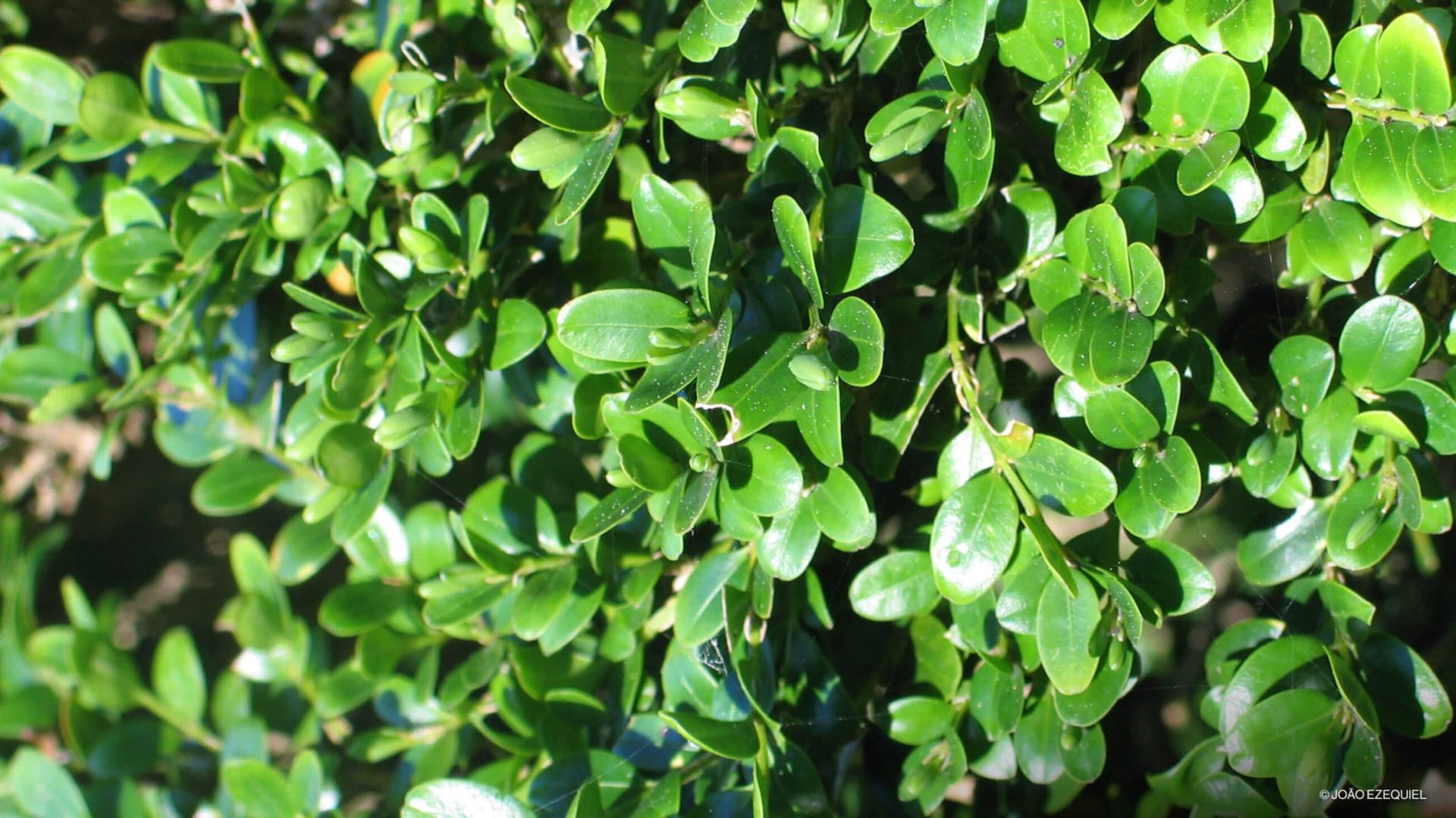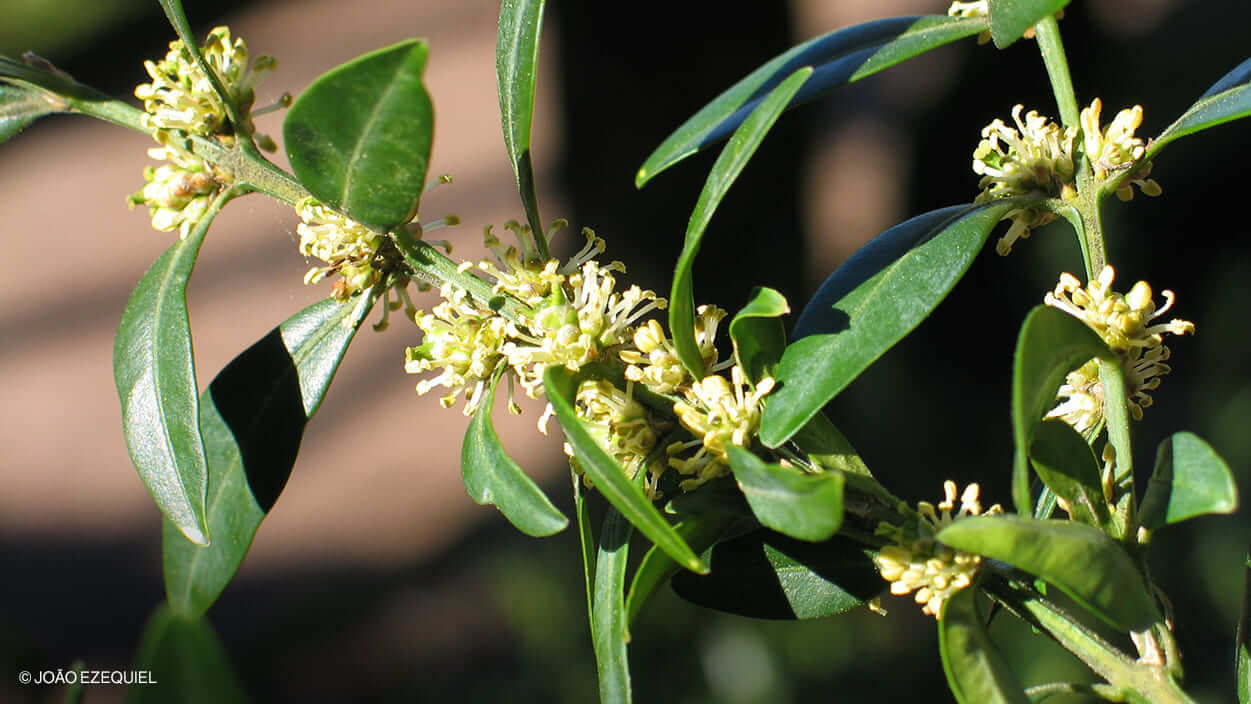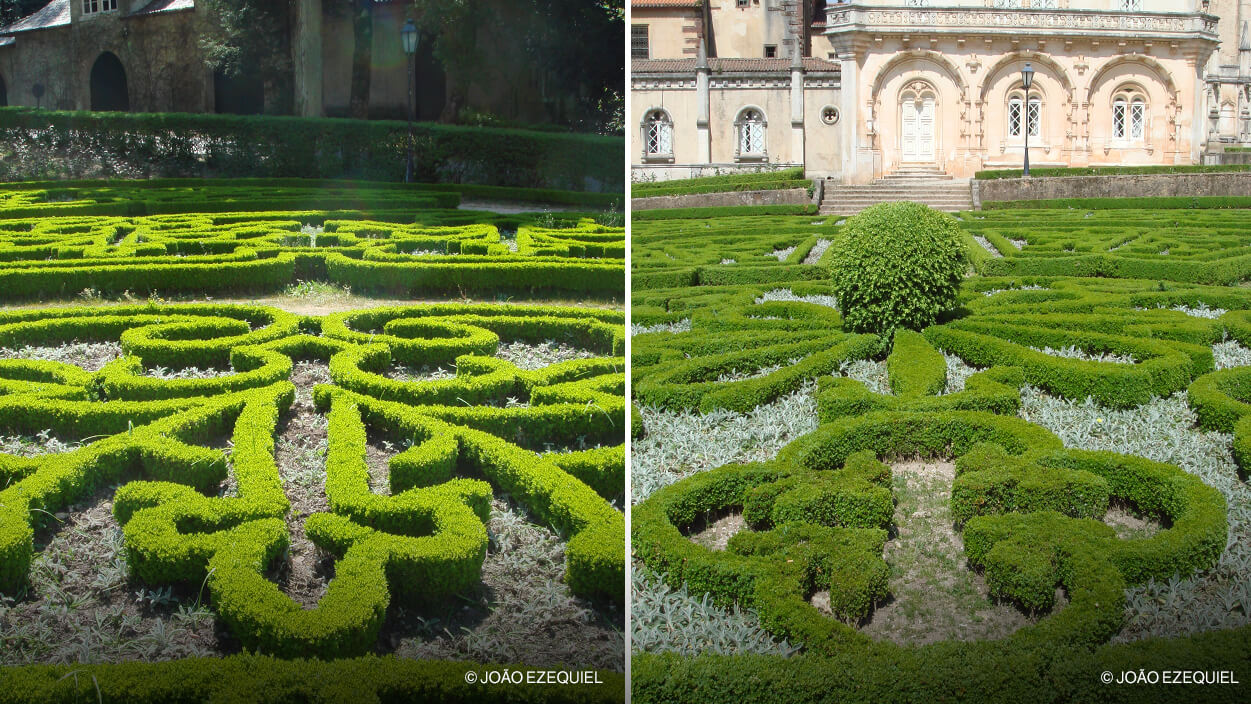Somewhere between a shrub a bush and a small tree, the common box (Buxus sempervirens L.) is one of gardeners’ preferred plants and has been used for ornamental purposes since Ancient Rome. And you might not know this but this particular species grows naturally in flood banks and rocky hillsides in the inner regions of Northeast and Central Portugal. This shrub is particularly fond of pollinators in woods and in gardens.
Just imagine an ornamental garden with plants pruned into attractive box hedges and sculptures in a romantic French-inspired arrangement. The common box is commonplace in such sceneries – and lends its shape to the landscape – but it is worth mentioning that this species grows naturally in a vast stretch of land crossing Europe, Africa and Asia, from England to Morocco, and from Portugal to Iran.
In Portuguese territory, it is predominantly and naturally there, especially in the Warm Lands of the Northeastern province of Trás-os-Montes and on the hillsides along the Sabor and Tua rivers. But, given its ornamental value to a large extent, it was taken to other locations in Portugal and the world and is currently also a resident species in North America.
In its natural habitat, it is a common companion for larger species, thriving in cool and shady places, such as riparian shrublands in flood banks and ravines, preferably on rocky soils. In mainland Portugal, it can be found on rocky hillsides in embedded valleys along the major tributaries on the right bank of the Douro River, upstream of the city of Régua. And it can also be found under the shade of assorted large trees.
Given its characteristics – resistance, durability, slow growth, small, persistent leaves and tolerance to shading – the common box is widely used in topiary – a gardening technique whereby plants are pruned into ornamental forms, both to form sculptures or for hedging purposes. Portugal is no exception to such use. Upon visiting emblematic gardens, such as Ajuda Botanical Gardens or the Ínsua Farm Gardens you come across carefully pruned boxwood.
Common box can reach tree size (between 1 to 10 meters). Its average size may be that of an adult person (two meters) and reach up to 10 meters. But it usually does not exceed five meters in height.
The leaves are small, opposite, flexible and oval or elliptical in shape, with a dark green colour on the upper surface and light green colour on the lower surface. Between January and May, this massive green characteristic of the common box is interrupted by small yellow-green flowers of about two millimetres, odourless, but very appealing to bees due to the concentration of nectar. Compact foliage is also a shelter for small birds, mammals and insects who use it for protection. The fruits, which ripen in summer, are small hard capsules, containing three to six very dark seeds.
The wood of the common box is stiff and may be turned or carved and is often used to make musical instruments (bagpipes, for example), sculptures and small utensils manufactured with fine detail, such as combs. It is worth mentioning that the use of the common box to make combs was fairly frequent in the Roman Empire. In classical literature, the word “buxus” is often used when referring to “comb”.





